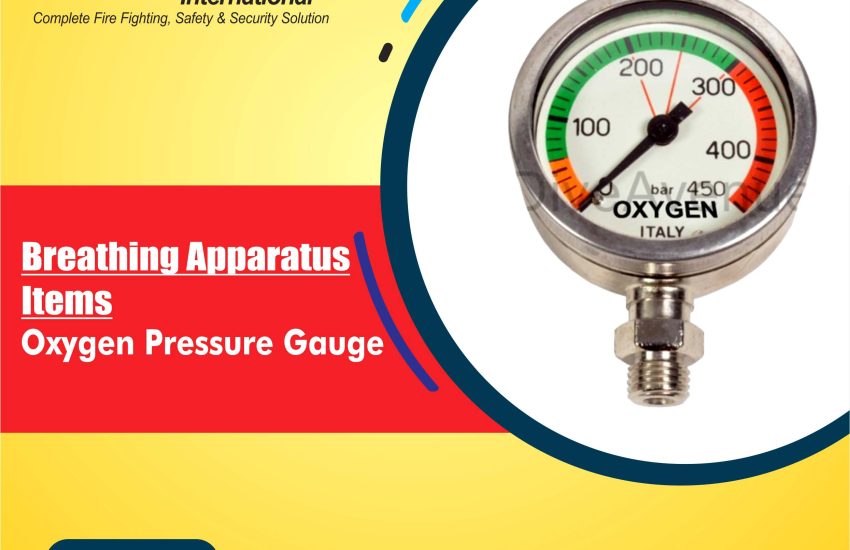Oxygen Pressure Gauge is an essential tool used to monitor the pressure level in oxygen systems, ensuring optimal safety and performance. Whether you’re dealing with medical, industrial, or laboratory oxygen systems, understanding how to choose and use a pressure gauge is crucial for maintaining equipment and safeguarding users. In this complete guide, we’ll walk you through everything you need to know about oxygen pressure gauges, including types, features, installation, maintenance, and key factors to consider.
What Is an Oxygen Pressure Gauge?
An oxygen pressure gauge is a device that measures and displays the pressure of oxygen within a tank or system. It is critical in applications where precise pressure control is necessary, such as in medical oxygen tanks, industrial oxygen systems, or laboratory settings. Oxygen pressure gauges typically feature a dial or digital readout that indicates the pressure in pounds per square inch (PSI) or bar.
Types of Oxygen Pressure Gauges
There are several types of oxygen pressure gauges, each designed for different applications and pressure ranges. The main types include:
1. Analog Oxygen Pressure Gauge
Analog gauges use a dial and needle to show pressure readings. These are simple, reliable, and commonly used in both medical and industrial applications. Mechanical oxygen pressure gauges are known for their durability and ease of use.
2. Digital Oxygen Pressure Gauge
A digital oxygen pressure gauge offers a more precise reading and is ideal for applications requiring high accuracy. It often features a digital display that provides the pressure in PSI or bar and may include features like alarm settings for low or high-pressure thresholds.
3. Compound Oxygen Pressure Gauge
These gauges measure both pressure and vacuum. They are often used in systems where pressure fluctuations or negative pressure conditions need monitoring.
Key Features to Consider When Choosing an Oxygen Pressure Gauge
When selecting an oxygen pressure gauge, several factors must be taken into account to ensure it meets your needs. Here are some important features to consider:
1. Pressure Range
Choose a gauge that can handle the pressure range required for your specific application. Medical systems typically use lower pressures, while industrial systems may require gauges with higher pressure ratings. Common ranges include 0-3000 PSI or 0-200 bar.
2. Material Compatibility
Since oxygen is highly reactive, it is essential to use a pressure gauge made from oxygen-safe materials. Gauges for oxygen systems are often made from materials like brass, stainless steel, or aluminum, which are resistant to corrosion and do not pose a risk of contamination.
3. Accuracy
Look for a pressure gauge that offers high accuracy, especially if you are using it in critical applications like medical oxygen delivery systems. An accuracy range of ±1% to ±2% is typical for high-quality gauges.
4. Dial Size
The size of the dial can affect readability. Larger dials (typically 2.5 to 4 inches in diameter) offer clearer, easier-to-read pressure readings, especially in environments where visibility is key.
5. Connection Type
Ensure that the oxygen pressure gauge is compatible with the fittings and connections used in your system. Common connection types include NPT (National Pipe Thread), BSP (British Standard Pipe), and CGA (Compressed Gas Association) connections.
6. Oxygen Cleaning
Oxygen-cleaned gauges are specifically designed to prevent the buildup of contaminants, which can be dangerous in oxygen systems. Oxygen-cleaned pressure gauges undergo special cleaning processes to remove oils, greases, and other contaminants that could ignite in high-oxygen environments.
How to Install an Oxygen Pressure Gauge
Installing an pressure gauge correctly is essential to ensure accurate pressure monitoring and safe operation. Follow these steps:
- Ensure Compatibility: Check that the gauge matches the pressure range and connection type for your system.
- Turn Off the Oxygen Supply: Before installing or replacing the gauge, always turn off the oxygen supply and depressurize the system.
- Clean the Connection Area: Clean the connection points to avoid contamination, especially in medical or high-purity systems.
- Install the Gauge: Attach the gauge to the system’s pressure port using the appropriate fitting (e.g., NPT, BSP, or CGA). Tighten it carefully without over-torquing.
- Test for Leaks: Once installed, check the connections for any leaks before starting the oxygen system.
Oxygen Pressure Gauge Maintenance
Proper maintenance of your pressure gauge will extend its lifespan and ensure accurate readings. Here are some maintenance tips:
1. Regular Inspection
Inspect the gauge regularly for visible damage, corrosion, or dirt accumulation. A damaged gauge should be replaced immediately to avoid inaccurate readings.
2. Cleaning
Keep the gauge clean, especially the face and connections. Use a soft cloth to wipe off dust and debris. For gauges used in medical applications, ensure that no oil or grease is present.
3. Calibration
Over time, the accuracy of the gauge may degrade. Regular calibration ensures the readings remain precise. Consider sending your gauge for re calibration annually or as required by your industry standards.
4. Check for Leaks
Periodically check the system for leaks. Even a small leak can cause the system to lose pressure, leading to incorrect readings or unsafe conditions.
Where to Use an Oxygen Pressure Gauge
Oxygen pressure gauges are used across various industries, including:
- Medical Applications: In hospitals and clinics to monitor oxygen cylinders and concentrators.
- Industrial Applications: For monitoring oxygen levels in welding, cutting, and chemical processing.
- Laboratories: In controlled environments where oxygen levels need to be monitored for research purposes.
- Aerospace: In aircraft and space vehicles to maintain proper oxygen pressure.
Conclusion
An oxygen pressure gauge is a vital tool in many applications that require precise oxygen control. Whether you’re in healthcare, manufacturing, or scientific research, understanding how to select, install, and maintain your pressure gauge is essential for safety and performance. By considering key factors like material compatibility, pressure range, and accuracy, you can ensure that your oxygen system operates smoothly and safely.
Remember to regularly inspect, clean, and calibrate your pressure gauge to maintain reliable operation over time. With the right knowledge and equipment, you can optimize your oxygen systems for maximum efficiency and safety.


